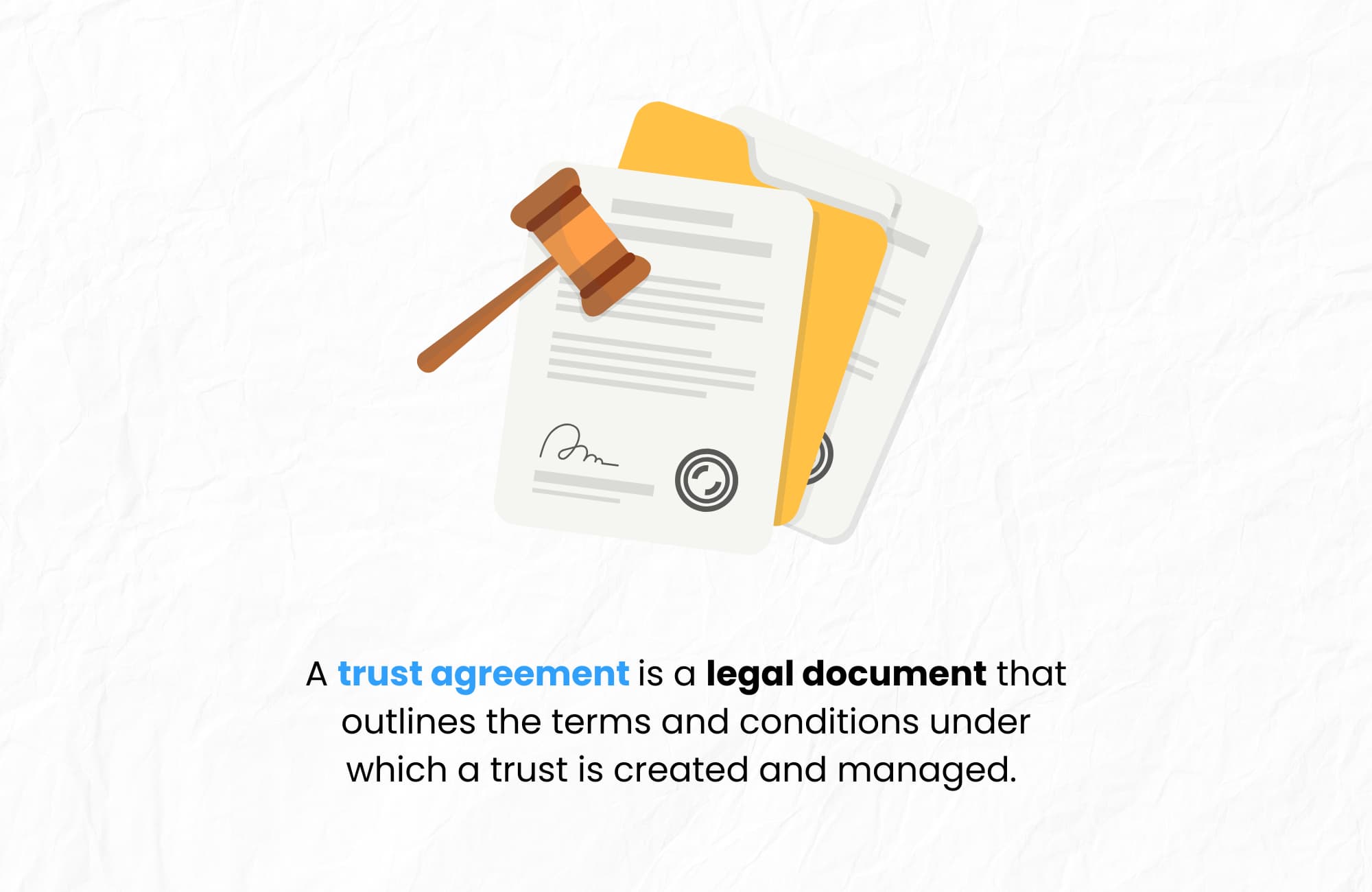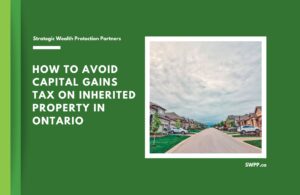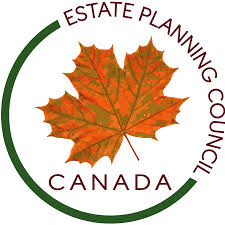Written by Ron Cooke, President & Founder of Strategic Wealth Protection Partners in Ontario, CEA®, Member of the Estate Planning Council Canada
Holding Property in a Trust
If you’re looking into holding property in trust in Ontario, you likely want to understand how it works and whether it’s the right choice for you.
Holding property in a trust in Ontario means that a trustee legally owns and manages the property on behalf of beneficiaries, based on the terms set out in a trust document.
The property—called trust property—can include real estate, investments, or business assets. This arrangement creates a separate legal entity, which can offer tax planning opportunities and asset protection.
Holding property in a trust is especially useful for minimizing probate fees, maintaining privacy, preserving wealth across generations, and supporting individuals with special needs. It’s also valuable for business owners or families looking to safeguard assets and ensure a smooth transfer of ownership.
A trust can help protect your real estate, provide tax benefits, and simplify the transfer of ownership. But it also comes with legal responsibilities and costs. This guide will walk you through the advantages and potential drawbacks, so you can make an informed decision with confidence.
If you have $3M or more in assets, we recommend that you seek the advice of an Ontario estate planning expert to find out if a trust will work for you.

Table of Contents
- Main Reasons for Holding Property in Trust
- Using a Trust to Reduce Probate Fees in Ontario
- Understanding Trust Agreements in Ontario
- Advantages of Holding Property in a Trust
- Disadvantages of Holding Property in a Trust
- Types of Trusts for Holding Property in Ontario
- Revocable vs. Irrevocable Trusts
- Legal and Tax Implications of Holding Property in a Trust
- Trust Reporting and Compliance in Ontario
- Understanding the Roles in a Trust and Trustee Responsibilities
- How to Create and Transfer Property Into a Trust
- How to Remove or Transfer Property Out of a Trust
- Common Questions
Main Reasons for Holding Property in Trust
Holding property in a trust is a strategic way to protect your legacy and streamline the transfer of wealth.
It provides benefits that a simple will often cannot, especially when privacy, control, and protection matter most. Here are the main reasons families and individuals in Ontario choose to place property in a trust:
- Privacy: Unlike a will, which becomes public during probate, a trust keeps your property and intentions confidential.
- Asset Protection: Trusts can shield property from creditors, lawsuits, marital breakdowns, and mismanagement.
- Estate Planning Control: Trusts allow you to decide how, when, and to whom property is distributed—now and in the future.
- Probate Avoidance: Assets in a trust bypass probate, saving time, legal fees, and Ontario’s estate administration tax.
- Tax Planning Opportunities: Trusts can help reduce income taxes or capital gains through income splitting and tax-efficient distributions.
📖 Related Read: How Do I Avoid Capital Gains Tax on Inherited Property in Canada?

Using a Trust to Reduce Probate Fees in Ontario
Probate fees in Ontario can take a significant bite out of your estate—1.5% of assets over $50,000, plus legal and court costs.
By placing assets into a trust during your lifetime, those assets no longer form part of your estate and can therefore bypass probate entirely. This not only saves your beneficiaries money but also speeds up the transfer process and keeps your affairs private.
A trust is one of the most effective ways to reduce or eliminate probate fees legally and strategically.
Understanding Trust Agreements in Ontario
A trust agreement is a legal document that outlines the terms and conditions under which a trust is created and managed.
It sets out the roles of the settlor (the person creating the trust), the trustee (who manages the trust property), and the beneficiaries (who receive the benefits of the trust). The agreement details what trust assets are included, how and when they should be distributed, and any specific instructions the trustee must follow.
In Ontario, a trust agreement is essential for making the trust a valid legal entity and ensuring it complies with provincial laws and tax rules. (+)

Case Study: Using a Trust and Insurance to Preserve a $12M Real Estate Portfolio for the Next Generation
The Problem:
Daniel* is a 65-year-old entrepreneur in the renovation business who has built a successful business and legacy.
His company, which includes his two children as active participants, generates around $500,000 in annual profit. Over the years, Daniel has accumulated approximately $12 million in investment properties, held through a holding company as well as other personal investments, a cottage, and his primary residence.
When he came to me, his primary concern was ensuring a smooth succession of his business and his investment properties to his children while minimizing the tax burden upon his death.
Without careful planning, the capital gains tax due upon his passing could significantly reduce the value of the estate passed to his children, placing a heavy burden on his surviving spouse or forcing the sale of assets.
The Solution:
We implemented a dual-strategy approach for Daniel:
1) Establishing a Trust: Daniel transferred the $12 million in real estate holdings into a trust. This strategy fixed the tax liability at the value of the properties on the date they were moved into the trust.
This means that any future growth in property value would be taxed when his children eventually dispose of the properties—not when Daniel passes away.
Importantly, because Daniel was 65, he qualified for certain tax planning options that allowed this rollover into the trust. If he had been younger, such a strategy would not have been as straightforward.
2) Using Life Insurance to Cover Taxes: To address the fixed tax liability from transferring the assets into the trust, Daniel purchased a life insurance policy.
He funded the policy with a large premium, then borrowed the equivalent amount from the bank.
He reinvested those borrowed funds back into real estate, effectively maintaining liquidity while ensuring the insurance would cover the estate’s tax bill upon his passing.
Why This Worked:
- Tax Deferral and Certainty: By freezing the current value of the assets inside the trust, Daniel avoided further capital gains tax liability on future appreciation.
- Estate Liquidity: The life insurance ensured that taxes could be paid without the need to sell off real estate.
- Spousal Protection: Daniel’s wife would not be saddled with the tax burden after his death.
- Efficient Asset Division: Daniel split his estate—his business and real estate holdings went to his children, while his RRSPs, primary residence, cottage, and other personal investments were designated for his wife. This approach respected both financial prudence and family harmony.
The Outcome:
Daniel felt immense relief knowing that his succession plan was solid.
He appreciated that his children would inherit the business and properties without a financial or legal burden, and his wife would be protected from unforeseen tax bills. The trust structure and insurance policy offered him clarity and control, while allowing continued growth of his assets.
Daniel was so satisfied with the outcome that he has referred many other clients to SWPP to explore similar estate planning strategies.
*Names have been changed to protect the identity of SWPP’s clients.

Advantages of Holding Property in a Trust
Holding property in a trust offers several advantages in Ontario estate planning.
It allows assets to bypass probate, reducing estate administration taxes and keeping matters private. Trusts can also provide effective tax planning through income splitting or deferring capital gains, depending on the trust structure.
Property held in trust is protected from creditors in certain cases, and trustees can manage it according to detailed instructions, ensuring long-term support for beneficiaries, such as minors or individuals with disabilities.
Trusts offer control, flexibility, and continuity, making them a strategic tool for safeguarding and efficiently transferring property across generations.
📖Related Read: What Is the Cost of a Living Trust in Canada?
Disadvantages of Holding Property in a Trust
While trusts offer valuable benefits, they also come with some important considerations.
Initial setup costs can be high, especially if legal, tax, and professional advice is needed to structure the trust correctly. There are also ongoing responsibilities for trustees, including managing assets, filing tax returns, and acting in strict compliance with the trust terms.
Improperly drafted trusts or selecting the wrong trustee can lead to family conflict, tax issues, or even legal challenges. Trusts aren’t a “set it and forget it” solution—they require thoughtful planning and regular reviews.
At SWPP, we’re here to help you avoid costly mistakes when putting a house or other property in a trust.
Types of Trusts for Holding Property in Ontario
Ontario offers several types of trusts that can be used to hold property, each with its own purpose and advantages.
A family trust is often used to hold real estate or investments for the benefit of children or other family members, offering both tax planning and asset protection. An inter vivos trust (also called a living trust) is set up during your lifetime and allows you to transfer property now while retaining control or setting rules for its use.
A testamentary trust is created through your will and comes into effect after death, often used for minor children, blended families, or dependents with special needs. Each trust type has unique tax implications, legal requirements, and strategic uses, depending on your goals.

Revocable vs. Irrevocable Trusts
The main difference between revocable and irrevocable trusts comes down to control.
A revocable trust allows you to make changes, add or remove assets, or even dissolve the trust during your lifetime. However, because you retain control, these trusts offer limited tax advantages and asset protection.
In contrast, an irrevocable trust cannot be changed once established, which means you give up control—but in return, you gain stronger protection from creditors, tax planning benefits, and probate avoidance.
For holding property in Ontario, irrevocable trusts are typically preferred if your goal is long-term protection and minimizing estate taxes or probate fees. Revocable trusts, while more flexible, offer fewer benefits when it comes to shielding assets and maximizing savings.
Using the right type of trust based on your unique goals, family dynamics, and long-term plans is very important.
| Feature | Revocable Trust | Irrevocable Trust |
|---|---|---|
| Control | The settlor retains full control and can amend or revoke the trust at any time. | Once established, the settlor cannot change or revoke the trust terms without consent. |
| Ownership of Assets | Assets are still considered to be owned by the settlor for legal and tax purposes. | Assets are legally transferred out of the settlor’s estate and are no longer under their control. |
| Tax Implications | Income is taxed in the hands of the settlor. Offers limited tax benefits. | Income is taxed in the trust or beneficiaries’ hands, depending on distribution. May offer tax planning opportunities. |
| Probate Avoidance | May avoid probate if properly structured and funded during the settlor’s lifetime. | Also avoids probate, as the assets are not part of the settlor’s estate. |
| Asset Protection | Limited protection, since the settlor retains control and ownership. | Stronger protection from creditors and legal claims, depending on circumstances. |
| Use in Ontario | Less common; often used for incapacity planning or privacy. | More common for advanced estate planning, tax strategies, or support for beneficiaries. |
| Flexibility | Highly flexible. Can be updated to reflect changes in circumstances. | Inflexible. Once settled, terms are generally fixed. |
Legal and Tax Implications of Holding Property in a Trust
Holding property in a trust in Ontario can trigger capital gains tax when the property is transferred into the trust, as it’s considered a deemed disposition at fair market value.
Property held in a trust may also impact ongoing property taxes, especially if the trust doesn’t qualify for the principal residence exemption. Land transfer tax may apply at the time of transfer unless specific exemptions are met—something that must be carefully reviewed with legal guidance.
Despite these tax considerations, one of the most compelling benefits is the ability to avoid probate fees, since trust-held property does not form part of your estate at death. With the right planning, a trust can help reduce overall taxes, maintain privacy, and ensure a smooth, tax-efficient transfer of assets.
Trust Reporting and Compliance in Ontario
Trustees in Ontario have serious legal and tax obligations, especially with recent changes to federal trust reporting rules.
Each year, most trusts must file a T3 tax return with the Canada Revenue Agency (CRA), reporting income earned and distributions made to beneficiaries. New CRA rules also require trustees to disclose detailed information about all beneficiaries, settlors, trustees, and protectors—even if no income was earned.
When holding real estate, trustees must also comply with land ownership registration laws, ensure proper property tax payments, and keep thorough records of all trust-related transactions. Failing to meet these duties can result in penalties, audits, or personal liability for the trustee.
Understanding the Roles in a Trust and Trustee Responsibilities
A trust involves three key roles.
The first role is the settlor, who creates the trust and contributes the initial assets. Next is the trustee, who manages those assets according to the trust terms. And the final role is the beneficiary, who receives the benefits of the trust either immediately or over time.
While the settlor sets the vision and purpose, it is the trustee who carries the legal responsibility of fiduciary duty—to act honestly, loyally, and in the best interest of the beneficiaries.
Trustees are responsible for managing investments, distributing income, keeping accurate records, filing annual tax returns, and complying with the law. This role carries personal liability if mismanaged, making it essential to choose someone with strong financial judgment and integrity.

How to Create and Transfer Property Into a Trust
Creating a trust to hold property in Ontario starts with defining your goals—whether it’s asset protection, probate avoidance, or legacy planning.
From there, you’ll work with a legal professional to draft a trust agreement, outlining the terms, roles, and conditions. The next step is to appoint a trustee—someone or a professional entity you trust to manage the property in accordance with your wishes.
Once the trust is established, the property must be legally transferred into the trust’s name. This involves preparing a deed of transfer, paying any applicable land transfer tax, and registering the trust as the new legal owner with the Ontario Land Registry.
Proper valuation, tax planning, and documentation are essential at every stage to ensure compliance and minimize costs.
How to Remove or Transfer Property Out of a Trust
Property can be removed or transferred out of a trust in Ontario if the trust terms allow it—or if the trust is revocable and the settlor is still living.
This typically involves the trustee preparing a legal transfer document and updating the Ontario Land Registry to reflect the change in ownership. In the case of an irrevocable trust, removing property may require court approval or the unanimous consent of all beneficiaries, depending on how the trust was structured.
It’s crucial to consider the tax consequences, as the transfer may trigger capital gains tax if the property has appreciated in value since being placed in the trust. If the trust is being dissolved, all remaining assets must be distributed according to its terms, and final tax filings must be completed.

Common Questions
Who owns property held in a trust in Ontario?
The trustee is the legal owner of the property, holding it on behalf of the beneficiaries according to the terms of the trust. The beneficiaries have the right to benefit from the property, but not direct control.
What are the disadvantages of putting a house in a trust in Canada?
Transferring a house into a trust may trigger capital gains tax, and the trust may not qualify for the principal residence exemption. There are also legal and administrative costs, and the trustee takes on ongoing responsibilities.
Can you put a house in a trust in Ontario?
Yes, you can legally transfer a house into a trust in Ontario. It must be properly documented and registered, and may involve land transfer tax and legal fees.
Why do people hold property in a trust?
People use trusts to avoid probate, protect assets, and control how property is distributed to heirs. It also offers privacy and can reduce taxes when structured strategically.
Final Thoughts
Holding property in a trust is a powerful legal arrangement that can offer a range of benefits for Ontario residents.
This is especially true when structured thoughtfully and in compliance with the Income Tax Act.
By separating legal title from beneficial ownership, a trust allows for strategic property ownership that may help reduce your overall tax burden.
For example, an inter vivos trust—established during your lifetime—can support income splitting among family members and offer valuable tax advantages, depending on how taxable income is allocated.
While navigating tax laws and the probate process may seem complex, a trust can simplify matters and strengthen your long-term legal ownership and estate planning strategy. That said, not everyone needs a trust. Work with an estate planning expert to find out if a trust is the right tool for you.
Key Takeaways:
- Legal guidance is essential to ensure the trust is set up and managed properly, minimizing risks and maximizing benefits.
- Property held in a trust is legally owned by the trustee, but managed for the benefit of the beneficiaries.
- Placing a house in a trust can trigger capital gains tax and may result in the loss of the principal residence exemption.
- Houses can be legally transferred into a trust in Ontario, but the process must be done carefully to meet legal and tax requirements.
- Trusts provide control, privacy, and probate avoidance, making them a powerful estate planning tool.
Discover the Benefits of a Living Trust in Ontario
Are you an Ontario resident considering a living trust as part of your estate planning?
At Strategic Wealth Protection Partners, we’re here to guide you through every step of the process with expert advice and personalized support. Begin your estate planning journey today with a Living Estate Plan Consultation from our experienced team.
Our mission at SWPP is to help you create an estate plan that secures your legacy, shields your assets from unnecessary taxation, and ensures your loved ones are cared for. By designing a living trust tailored to your goals, our experts will help you build a plan that truly reflects your values and priorities.
Take control of your future—start planning today!
Schedule a Living Estate Plan Consultation
Planning your legacy is about more than numbers—it’s about ensuring your family remembers you and your values are honoured for many years to come.
Estate planning and trusts can feel overwhelming, especially if it’s your first time. That’s why we’re here.
With our simple, 5-Step Living Estate Plan, we make the process easy, helping you create a comprehensive estate plan or trust that protects your assets from taxes and probate fees while preserving your legacy. Tools like The Final Word Journal capture your story, wishes, and essential details like accounts and end-of-life plans, ensuring your family has clarity and comfort.
Take the first step today—schedule a consultation call and give your family the ultimate gift: peace of mind and the assurance they were always your priority.
Read More
If you’re starting your estate planning process, you may find these articles helpful:
- How to Create a Living Trust in Canada
- How Much Does a Living Trust Cost in Ontario?
- Can I Put My House in a Living Trust in Canada?
About the Author
RON COOKE, PRESIDENT & FOUNDER OF STRATEGIC WEALTH PROTECTION PARTNERS

With over 30 years in financial services, I’ve seen the challenges families face when a loved one passes—lost assets, unnecessary taxes, and emotional stress. That’s why I created the Living Estate Plan, a comprehensive process to protect assets, eliminate estate and probate fees, and create legacies that are remembered for many years to come.
This plan ensures your family receives not just your wealth, but a meaningful reminder of your care and love. Tools like The Final Word Journal capture your story, wishes, and essential details, offering clarity and comfort during difficult times.
Your final gift should be more than money—it should be peace of mind, cherished memories, and an organized estate.
Schedule a Call
Schedule a 30-minute consultation call with Strategic Wealth Protection Partners.
Click HERE to schedule a consultation.









